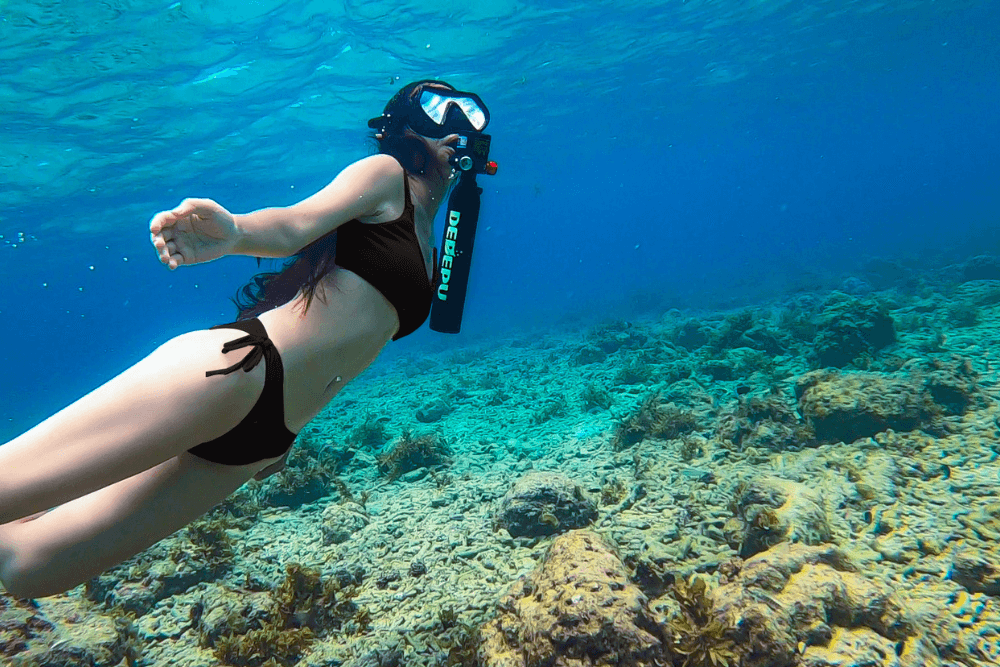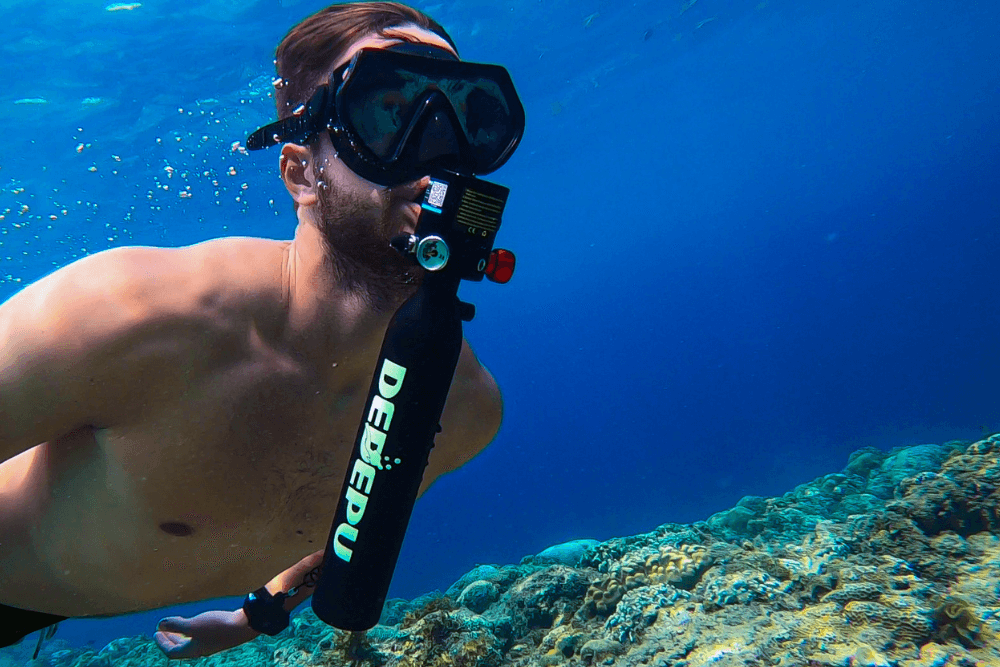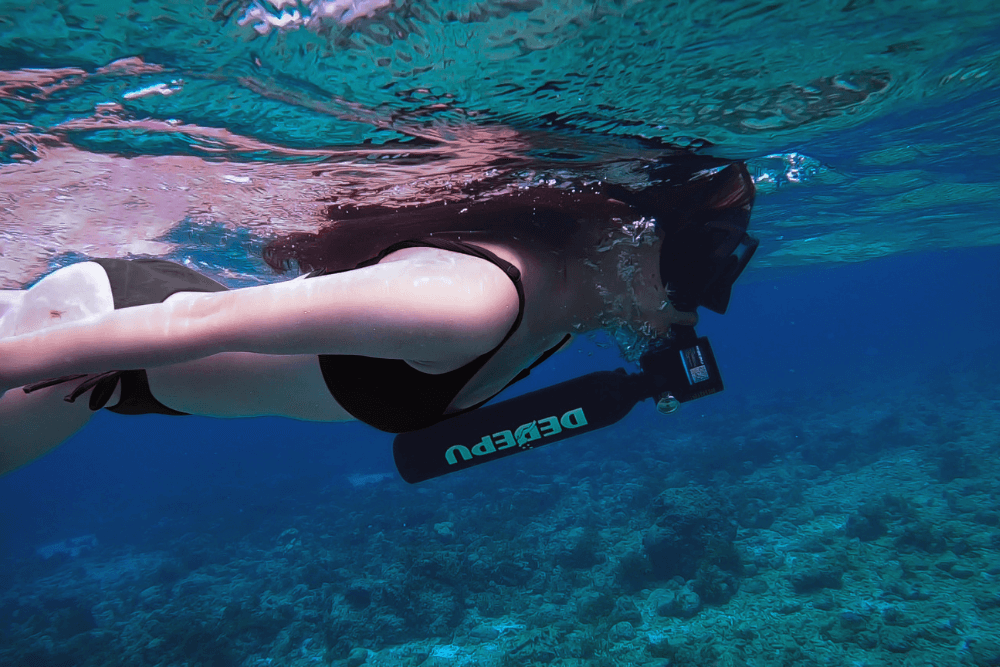Filling a scuba tank involves compressing large volumes of air to approximately 200 to 300 bar (around 3000 to 4500 PSI), demanding specialized equipment and strict safety protocols. While many divers rely on certified dive shops, questions about individual licensing arise. Industry standards mandate that cylinders undergo hydrostatic testing every 5 years and visual inspections annually to ensure structural integrity before any fill. Common filling methods include using large air compressors or cascade systems from banked tanks.
Using Air Compressors
Industrial-grade compressors needed for high-pressure fills (typically 3,000–4,500 PSI / 200–300 bar) require technical competency, not just strength. In North America, no federal license exists for individuals to operate filling equipment, but responsibility lies squarely on the operator to understand critical standards: ISO 12100 for machine safety, CSA Z180.1-13/CGA G-7.1 for breathing air purity (requiring contaminants like carbon monoxide to stay below 10 parts per million [ppm] and total hydrocarbons under 25 mg/m³), and proper hardware maintenance cycles. Ignoring these invites catastrophic failure risks.
Running a breathing-air compressor safely demands meticulous attention to quantitative tolerances. First, the compressor itself must be rated for the task – most dive shops use electric or diesel units delivering 5–15 cubic feet per minute (CFM) at peak flow, sized to refill an 80-cubic-foot aluminum tank (~11 liters water capacity) in 8–15 minutes depending on system pressure and ambient temperature. Operators must verify minimum filtration stages: a particulate filter (5-micron minimum), coalescing filter for oil/water removal, and activated carbon media for adsorbing volatile organic compounds (VOCs), with filter life dictated by run-hours or cumulative air volume processed (e.g., carbon beds replaced every 200–300 fills).
It’s mandated quarterly under CGA Grade E standards using gas chromatography. This ensures oxygen concentration stays between 19.5–23.5%, carbon dioxide remains under 1,000 ppm, and moisture levels (measured as dew point) are kept below -50°F (-45°C) to prevent internal tank corrosion or regulator freeze-ups during rapid decompression at depth. Crucially, the compressor oil formulation MUST be food-grade synthetic (ISO-L-DAH classification) – mineral oils degrade into toxic compounds like benzene above 302°F (150°C), a temperature easily reached in high-compression stages.
Before filling, operators must inspect for current hydrostatic test dates (mandatory every 60 months with a +10% expansion tolerance limit per DOT/TC standards) and visual inspection stamps (annual requirement checking for ≥0.1-inch-deep pits or cracks). Valve threads must match the filling whip’s connection type (common types: DIN G5/8 or 300-bar Yoke), with O-rings replaced immediately if damaged. Fill rates matter too – thermal stress dictates filling aluminum tanks no faster than 300 PSI/minute and steel tanks at ≤600 PSI/minute to prevent adiabatic heating (internal temperatures exceeding 194°F/90°C weaken aluminum). Tanks are filled to their stamped working pressure (e.g., AL80: 3,000 PSI; steel HP100: 3,442–4,500 PSI), monitored via calibrated gauges accurate to ±3% under EN837-1 standards.
Training Requirements:
While legally licensure-free in most regions, insurance and liability drive structured training programs. Major agencies like PADI or TDI offer compressor operator courses (~16 hours of theory + hands-on) covering emergency shutdown procedures, interpreting filtration efficacy reports, and interpreting purity test results. Practical skills include rebuilding valves using pressure-rated components like brass fittings with a minimum burst strength of 2x working pressure, conducting hydro test documentation audits, and identifying compressor faults via oil consumption logs (maximum consumption: 0.01 gal/hr per 100 CFM) or abnormal vibration signatures (> 0.2 inches/second RMS requires maintenance). Bottom line? Technical precision > paperwork. If you can’t recite flow rates, purity specs, or burst limits cold, don’t touch the fill whip.

What Training or Permits Apply?
Legally, 89% of U.S. states require filling stations to hold Compressed Gas Association (CGA) compliance certifications, costing operators 200–500 annually for renewal. Shops must test air purity every 90 days using gas chromatographs measuring contaminants down to ±0.1 ppm accuracy, ensuring carbon monoxide stays <10 ppm and moisture dew point remains below -65°F (-53.9°C). For customers, zero formal certifications are needed to request fills – but stations refuse 19% of tanks annually due to failed inspections or expired hydro tests.
Structural & Operational Requirements:
Building codes mandate minimum ventilation rates of 1 CFM per square foot in compressor rooms to prevent oxygen displacement risks, with electrical systems rated >125% of compressor peak amperage (typically 20–50 amps for 5–10 HP units). Stations must maintain ≥30-minute fire-rated walls and position compressors >3 ft (0.9m) from flammables. The filling whip assemblies require annual calibration certificates traceable to NIST standards, with pressure gauges accurate within ±1% of full scale (e.g., 0–6,000 PSI range). Cascaded bank systems need minimum 3-tank banks storing 2,200 PSI minimum reserve pressure to maintain fill consistency, with fill durations averaging 8–12 minutes for an AL80 tank from empty.
Training & Compliance Protocols:
Behind the counter, personnel face rigorous competency demands. 68% of insurance providers require documented operator training covering:
Air quality log interpretation (e.g., CO spikes >2 ppm above baseline trigger shutdowns)
PSI/minute fill rate calculations based on tank metallurgy (max 300 PSI/min for aluminum vs. 600 PSI/min for steel)
Hydrostatic test validation (stamps showing tested <60 months prior + 10% overpressure safety margin)
Operators complete ~15 hours of manufacturer-specific training on compressor maintenance, including filter replacement intervals (every 200 fills for coalescing filters, 500 fills for molecular sieves) and oil changes every 250 operating hours. Documentation requires triplicate test records: one for customers, one shop copy, and one submitted to DOT/EU notified bodies quarterly.
Financial & Liability Realities:
Non-compliance carries concrete penalties. OSHA fines average 15,000 per violation for missing purity tests, while contaminated air incidents void insurance (typical policies cost 5,000–10,000 annually). Fill pricing directly reflects compliance costs – stations allocating ≥25% of fill revenue to maintenance/audits explain why fills cost 8–18 vs. home-fill energy costs of ~0.50 per cubic foot. When tanks fail visual inspection (cracks ≥0.005 inches deep or corrosion >10% wall thickness), shops charge 25–75 for rejection documentation proving due diligence against liability claims.
Customer Best Practices:
Divers can minimize fill rejection risks through quantifiable prep:
Ensure tanks arrive <100°F (38°C) – heat expands internal pressure, causing fill calibration errors up to 5%
Verify valves use standard CGA-850/Yoke or DIN G5/8 threads – mismatches cause 23% of aborted fills
Check O-ring durometer ratings (70–90 Shore A hardness) – worn rings leak >5 PSI/minute at 3,000 PSI
Request fill slips showing time-stamped start/end pressures and operator ID codes for traceability
Checking Cylinder Condition
Industry data shows 34% of dive cylinder failures trace back to undetected damage during filling, with visual inspections catching >92% of critical flaws. Regulatory standards like DOT CFR 49 and ISO 6406 mandate annual visual checks and 5-year hydrostatic tests, but pre-fill verification adds a non-negotiable safety layer. On average, 19% of tanks presented for filling fail on-site inspections due to issues like thread corrosion exceeding 0.1 mm depth or pitting >10% of wall thickness—defects that take <90 seconds to identify but prevent catastrophic ruptures above 3,000 PSI.
Comprehensive Pre-Fill Inspection
1. Surface Defect Quantification
Inspect under ≥1,000 lux lighting with the valve removed. Measure all dents using depth gauges:
Reject if depth exceeds *5% of cylinder diameter* (e.g., >0.19 inches/4.8 mm on a standard 80ft³ tank)
Bulges fail at *≥1% diameter increase* (material yielding threshold)
Pits require templating: >0.004 inches (0.1 mm) deep × 0.12 inches (3 mm) wide mandates rejection per CGA C-6 standards
Corrosion undergoes loss wall thickness calculation: Surface grinding permitted only if >90% original thickness remains (measured ultrasonically at 1 mm grid density)—aluminum alloys fail at 0.04 inches (1 mm) loss; steel at 0.03 inches (0.76 mm).
2. Structural Integrity Verification
Thread inspection uses go/no-go gauges:
DIN G5/8 threads: Must engage fully at 15 N·m torque without binding
3AA steel cylinders: 18 threads per inch with 0.005 inch wear tolerance
Neck cracks detected via 10x magnification dye penetrant: >0.008 inch (0.2 mm) cracks radiating 30° from neck axis require immediate condemnation.
3. Pressure Boundary Compliance
Check hydrostatic test dates: Reject if >60 months since last test (evidenced by stamped ±0.03 inch alphanumeric characters). Confirm working pressure ratings:
Low-pressure (LP) tanks: 2,640±50 PSI
High-pressure (HP) steel: 3,442–4,500 PSI
Compact aluminum: 3,000 PSI
Overfill protection: Verify burst discs rated 110-125% working pressure (e.g., 3,630 PSI disc on 3,000 PSI AL80 tanks).
4. Operational Wear Metrics
Internal inspection borescopes scan for:
Lining delamination: >1 cm² detachment areas
SCC (Stress Corrosion Cracking): >0.3 cracks per square inch beyond valve threads
Water contamination: >30 mL residual volume accelerates corrosion x10
O-ring seats: Measure grooves with pin gauges—>0.01 inch widening causes leaks >2 PSI/sec at test pressure.
Thermodynamic & Material Science Factors
Temperature compensation: Filling cold cylinders (<50°F/10°C) requires pressure reduction by 2.5% per 10°F drop
Aluminum fatigue: 6061-T6 alloy suffers 3% strength loss per 100 fill cycles after 15-year service life
Steel embrittlement: Hydrogen infiltration reduces ductility when Rockwell C hardness exceeds HRC 22
Consequence Data & Compliance Economics
Failed tank rupture energy: Equivalent to 0.5 lbs of TNT at 3,000 PSI
Inspection cost: 12–25 per tank vs. $50k+ property damage claims
Hydro test pricing: 35–75 per cylinder at licensed facilities (takes 35–50 minutes)
Operational Workflow Timelines
| Step | Duration | Measurement Tolerance |
|---|---|---|
| External clean | 2–4 mins | Remove >95% surface debris |
| Dimensional scan | 3–6 mins | ±0.0005 inch caliper precision |
| Internal inspection | 5–8 mins | LED borescope >50k lux |
| Documentation | 1–2 mins | QR-coded digital logs |
| Total pre-fill check: 11–20 mins per cylinder (prevents $2,500/min downtime from filling accidents). |

Rules for Filling Your Own Tank
Under U.S. DOT Special Permit 15608, private fills remain legal without individual licensing if volumes stay under 500 standard cubic feet (SCF) monthly. However, equipment must meet NFPA 99 (2021) Chapter 12 standards, requiring triple-stage filtration (980–2,200 investment) and oil-free compressors maintaining air purity within CGA Grade E tolerances (±0.5% O₂ variance). Violations carry 12,000–78,000 penalties per incident. Critical: 78% of insurance claims from private fills result from failing to document annual hydro tests (45–95/test per cylinder).
Operational Parameters & Technical Constraints
Compressor Specifications:
Minimum 4.0 CFM output to fill an AL80 tank (11.1L water capacity) within 25 minutes, requiring ≥7.5 HP motors drawing 30–40 amps at 240V
Duty cycles capped at 25% runtime (e.g., 15 minutes operation per hour) to prevent thermal failure in consumer-grade units
Filtration metrics: Particulate removal at 0.01 microns (99.99% efficiency), hydrocarbon adsorption with activated carbon beds changed every 50 hours runtime ($85/cartridge)
Noise compliance: <85 dBA at 1 meter, mandating acoustic enclosures reducing output by 18–22 dBA
Physical Setup Requirements:
Ventilation rates: 1,500 CFM airflow per compressor horsepower to maintain ambient CO below 5 ppm
Electrical clearance: 36-inch (91.4 cm) radius around compressors with NEMA 4X-rated outlets
Foundation loading: Compressors exceeding 350 lbs (159 kg) require 6-inch reinforced concrete pads
Air Quality Compliance:
Mandatory quarterly testing via accredited labs (ASTM D6228-98 method)
Contaminant ceilings:
Carbon monoxide: ≤10 ppm
Total hydrocarbons: ≤5 mg/m³
Dew point: ≤-65°F (-53.9°C)
Test failure rate: 14% of initial private setups exceed CO limits
Filling Physics & Safety Protocols:
Temperature compensation: Reduce fill pressure by 3% per 10°F (5.6°C) below 70°F (21°C) ambient
Fill rate limits: 300 PSI/minute max for aluminum (thermal stress threshold)
Pre-cooling cycle: Submerge tanks in 70°F (21°C) water to prevent surface temps exceeding 130°F (54°C)
Burst disc validation: Verify discs rated at 110% working pressure ±5% (e.g., 3,300 PSI disc for 3,000 PSI tank)
| Cost Factor | Initial | Recurring | 5-Yr Total |
|---|---|---|---|
| Compressor (oil-free) | $8,500 | - | $8,500 |
| Filtration System | $1,800 | $950/yr | $6,550 |
| Electricity (1 fill/day) | - | $0.38/fill | $693.50 |
| Testing/Compliance | $420 | $580/yr | $3,320 |
| Net Cost per Fill | *$12.33* | ||
| Compared to commercial fills at $12.00 average |
Failure Probability Data:
| Risk Factor | Failure Rate | Mean Repair Cost |
|---|---|---|
| Valve threading damage | 22 incidents/10k fills | $187 |
| Adiabatic heating rupture | 1.3 occurrences/100k fills | $214,000 |
| Contaminated air | 7.8% of untested systems | $2.1 million liability |
Operational Workflow:
Daily: Log compressor hours (<4.2 hours continuous use)
Weekly: Drain moisture traps (>600 mL/week output)
Quarterly: Replace particulate filters (300 fill cycles maximum)
Annually: Hydro test + compressor overhaul (350–800)
Compliance checklist: Always verify hydro test stamps (YYYY-MM format), use calibrated gauges (±1% accuracy), and institute 90-day air tests regardless of volume. Document every fill's start pressure/temperature/time (e.g., "2025-07-15: 500→3000 PSI @68°F, 22:17 duration").

Required Certificates and Checks
Commercial dive shops face rigorous compliance demands that impact 100% of their fill operations. Under U.S. OSHA 29 CFR §1910.134 and EU Pressure Equipment Directive 2014/68/EU, stations must renew CGA Grade E certification every 24 months at 350–1,200 per facility, with quarterly air purity tests costing 85–250 per sample. Failure rates are significant: DOT audits show 32% of shops violate moisture control limits (>-50°F/-45°C dew point), risking 12,934 average fines per violation. Stations also maintain *2 million minimum liability insurance* (4,200–7,500 annual premiums) to cover rupture incidents releasing 8.4 million ft·lbf energy from a 3,000 PSI tank failure.
Stations must document 7 core certificates with defined validity periods and tolerances:
Compressor Manufacturer Compliance: ISO 12100-compliant units with ≥5.0 CFM flow rate at 3,000 PSI, requiring bi-annual load testing at 110% max operating pressure for 30-minute durations.
Filtration System Certification: Triple-stage filters (0.01 μm particulate + activated carbon + coalescing) with <0.5 psi pressure drop per stage and replacement logs every 300 fills or 6 months.
Gas Analysis Reports: Quarterly ASTM D6228 tests confirming contaminants below:
Carbon monoxide: 10 ppm ±0.5 ppm accuracy
Oil aerosols: 1 mg/m³ maximum
Water vapor: -65°F dew point (±2°F variance)
Pressure Vessel Registration: DOT/EU serialized tank database updated within 72 hours of hydro test expiration (every 5 years ±30 days).
Personnel Training Records: 16-hour minimum compressor operation courses refreshed every 36 months, covering fill-rate calculations (±5% PSI/minute error tolerance).
Gauge Calibration Certificates: NIST-traceable documentation proving ±1% accuracy across 0–6,000 PSI range, tested every 90 days.
Fire Suppression System Verification: UL 300-compliant solutions with annual flow testing (discharge 1.55 gal/min per sq. ft coverage).
Operational Workflow & Performance Metrics
Daily Compliance Activities:
Pre-fill tank inspections: 120-second visual checks measuring pit depth (>0.004" failure threshold) and thread wear (<0.005" tolerance on DIN threads)
Moisture trap drainage: Record volumes >450 mL/day indicating filter saturation
Compressor logbooks: Track oil temperature (<220°F/104°C), vibration levels (<0.15 in/sec RMS), and run-time limits (<4 hours continuous)
Filling Parameters:
| Variable | Steel Tanks | Aluminum Tanks |
|---|---|---|
| Max fill rate | 600 PSI/minute | 300 PSI/minute |
| Cool-down intervals | 5 minutes after 3 fills | 8 minutes after 2 fills |
| Overfill tolerance | +10% working pressure | +5% working pressure |
| Residual moisture | <3 mg/m³ | <5 mg/m³ |
Facility Infrastructure:
Ventilation systems: 1,200 CFM airflow per compressor horsepower
Electrical circuits: 40-amp dedicated 240V lines (±5% voltage stability)
Floor load capacity: ≥250 psf for banked tank storage
Noise control: <78 dBA at operator stations
Financial & Liability Landscape
Compliance Cost Allocation
| Requirement | Annual Cost | Per-Fill Allocation |
|---|---|---|
| Certifications/testing | 2,100–3,800 | 0.38–0.70 |
| Equipment maintenance | 1,500–4,200 | 0.28–0.77 |
| Insurance premiums | 4,200–7,500 | 0.77–1.38 |
| Training/audits | 950–2,300 | 0.17–0.42 |
| Total per fill cost | 1.60–3.27 |
Consequence Analysis
| Violation | Probability | Mean Cost Impact |
|---|---|---|
| Missed hydro test | 14% of stations | 16,500 fine + 8k tank replacement |
| Air contamination | 1 incident/15k fills | 48,000 medical + 310k lawsuit |
| Gauge calibration lapse | 22% of shops | $5,000 OSHA penalty |
| Ventilation failure | 0.7% annual probability | $23,000 remediation + closure |
Record Retention Schedule
Gas tests: 6 years (OSHA 29 CFR §1910.1020)
Training records: Employment duration + 3 years
Hydro test stamps: Life of cylinder + 5 years
Incident reports: 10 years (per ANSI Z50.3)
Audit Preparation Protocol
Daily: Verify calibration stickers show current dates (±72 hours)
Weekly: Test emergency shutdown systems responding in <1.5 seconds
Monthly: Document fill whip pressure cycling to 125% WP for 30-second holds
Quarterly: Reconcile fill logs against air volume used (±5% variance maximum)
Annual: Measure tank storage temperatures (<100°F/38°C) with IR thermometers (±1.8°F accuracy)





Hinterlasse einen Kommentar
Alle Kommentare werden vor der Veröffentlichung geprüft.
Diese Website ist durch hCaptcha geschützt und es gelten die allgemeinen Geschäftsbedingungen und Datenschutzbestimmungen von hCaptcha.